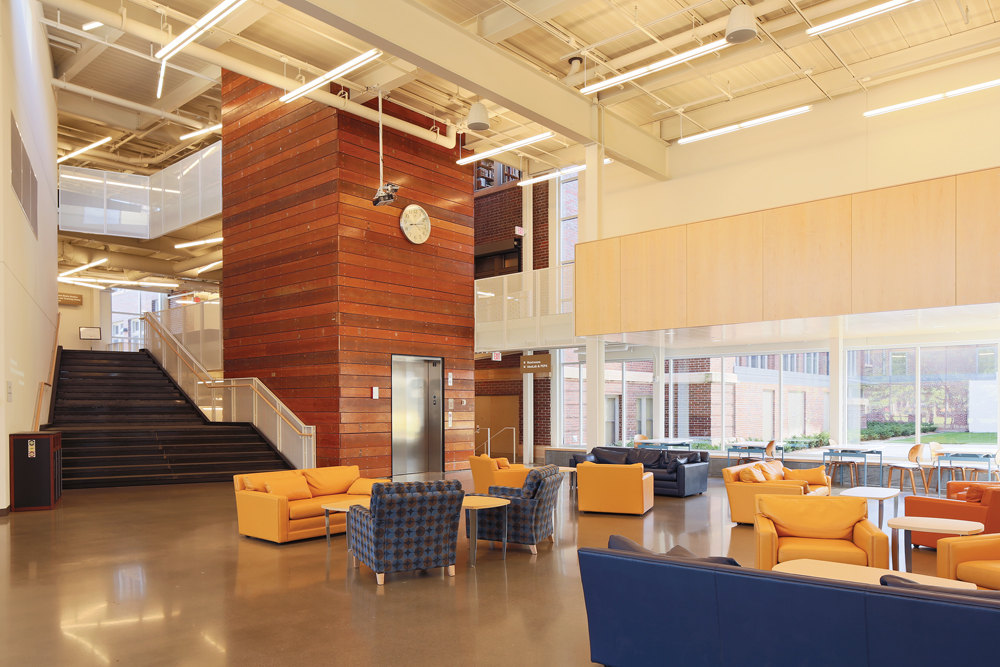Colleges and universities have been in the forefront of green building for more than a decade. Recently, pioneering academic institutions have been testing the limits of energy-conserving technologies, devising new ways to pay for sustainability extras, and extending sustainability to the whole campus.
Colby College, Waterville, Maine, this year became the fourth college in the country to achieve carbon neutrality. To help Colby reduce its reliance on oil by 90% and cut its greenhouse gas emissions by 70%, Architectural Resources Cambridge, Rist-Frost-Shumway Engineering, and PC Construction devised a 15,800-sf biomass cogeneration heating plant that burns thousands of tons of forest waste harvested within a 50-mile radius of the campus. It is expected to save the college $1.4 million a year in fuel costs.
Carleton College, Northfield, Minn., took sustainability to its roots by converting a historic middle school into the Weitz Center for Creativity. The LEED Gold adaptive reuse/addition created a multifunctional, interdisciplinary workshop for a variety of academic disciplines, as well as a community spaces and centralized support for multimedia and interactive technologies.
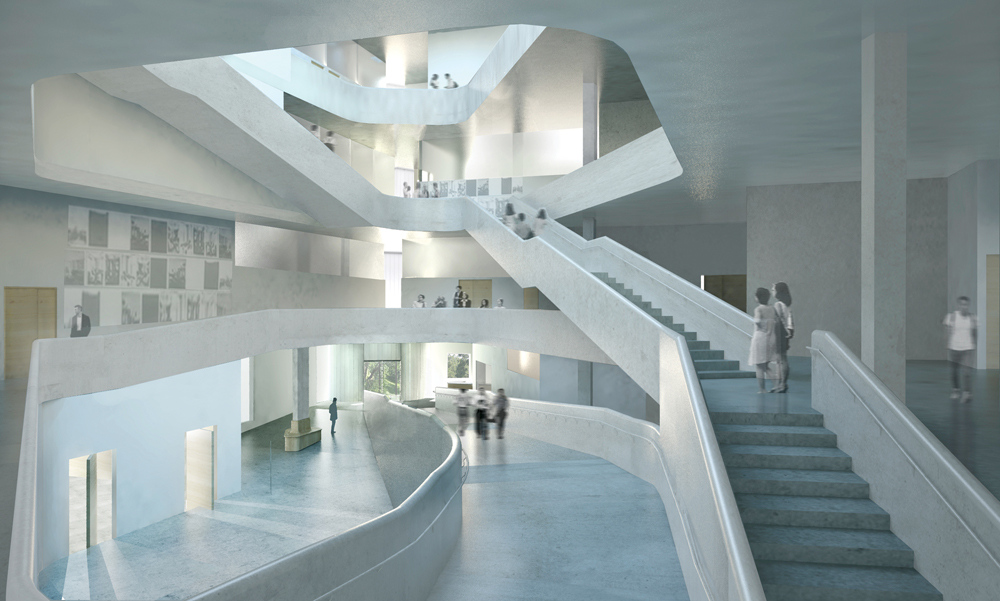
The Visual Arts Building at the University of Iowa, designed by Steven Holl Architects and BNIM, broke ground in September. Upon completion in 2016, the 126,000-sf loft-like structure will use active slab heating and cooling into the exposed bubble-deck structure to reach LEED Gold certification. Also on the Building Team: Buro Happold (SE), Design Engineers (mechanical), Shive-Hattery (CE), Transsolar (sustainability engineer), L’Observatoire International (lighting consultant), WJ Higgins & Co. (curtain wall consultant), The Sextant Group (AV), and Miron Construction (CM). PHOTO: COURTESY STEVEN HOLL ARCHITECTS
Dialing for dollars at the DOE
Universities are upping their game when it comes to finding ways to pay for supergreen projects. Oakland University, Rochester, Mich., was able to reach LEED Platinum for its new $64 million Human Health Building thanks in part to a $2.7 million grant from the U.S. Department of Energy.
The extra money, coupled with funds from the state of Michigan, allowed designer SmithGroupJJR and The Christman Company (CM) to proceed with a 340-well geothermal system, 117 vacuum tube solar thermal panels, a desiccant dehumidification system, and solar domestic water heating. Two hundred roof-mounted solar PVs generate 45 kW, or 3% of the project’s electricity. Total annual energy savings: 35%.
Taking sustainability beyond the individual building
Collegiate master planning is taking on a new dimension in Palm Springs, Calif., where HGA Architects and Engineers recently completed the first phase of the new West Valley Campus at the 12,000-student College of the Desert. A 50,000-sf cluster of academic buildings will house spaces for basic skills labs, culinary arts, and a Desert Energy Enterprise Center that will provide training in the engineering of solar panels and wind turbines. The goal: to have the campus produce more energy than it consumes.
In fact, the plan goes beyond net-zero-plus energy to include NZ carbon, water, waste, and materials. On-site photovoltaics will produce electricity; 60 of the 119 acres of the site will be devoted to a solar farm, which the college will lease to a third party to provide renewable energy for the Coachella Valley—and revenue for the college.
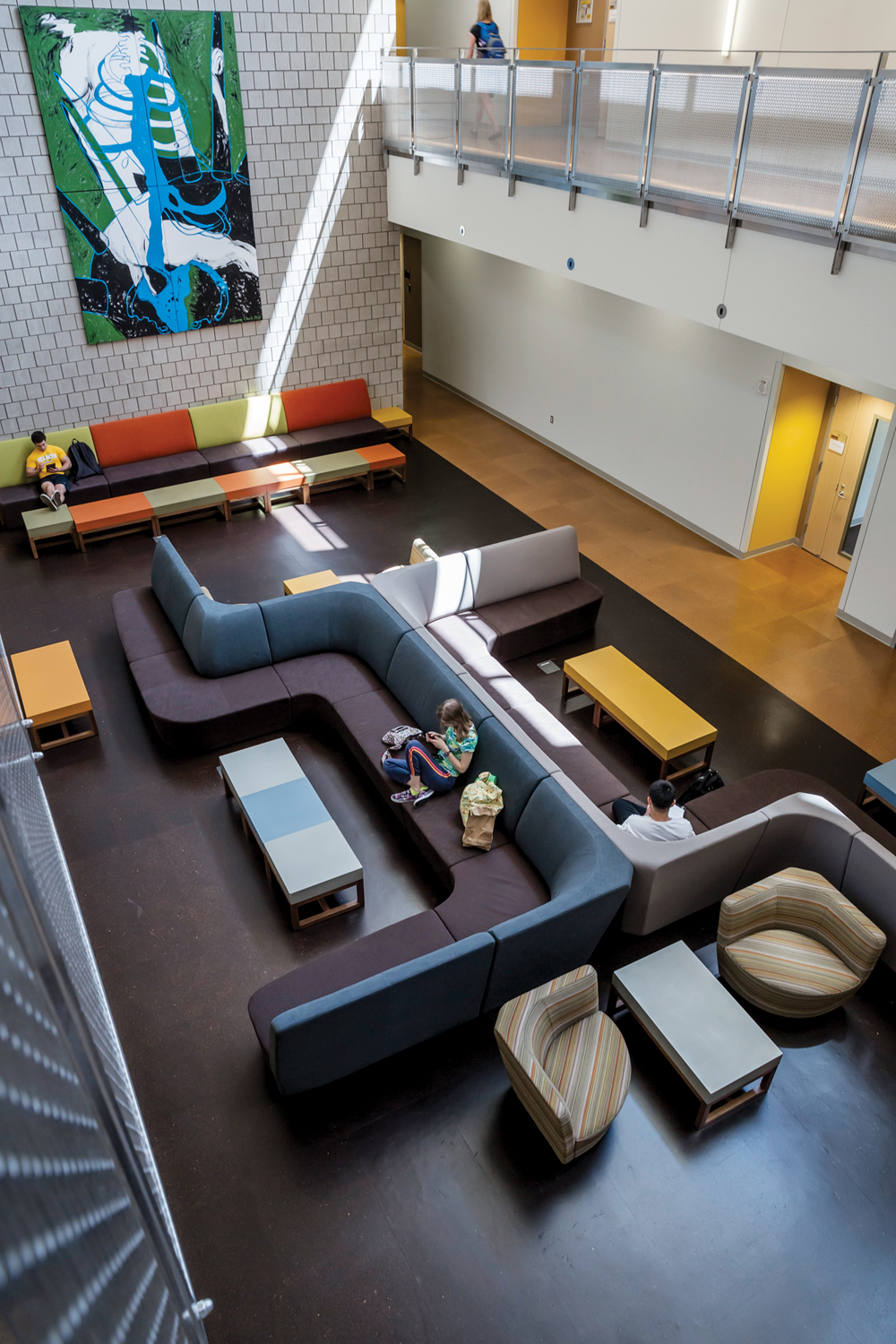
The 160,260-sf, LEED Platinum Human Health Building at Oakland University, Rochester, Mich. The five-story facility, completed in mid-2012, provides a collaborative setting for the Schools of Nursing and Health Sciences, which had outgrown their separate facilities. SmithGroupJJR provided architectural, interior, and landscape design, engineering (MEP, SE, CE), lab planning, and LEED consulting. The Christman Company was the CM. PHOTO: PRAKASH PATEL
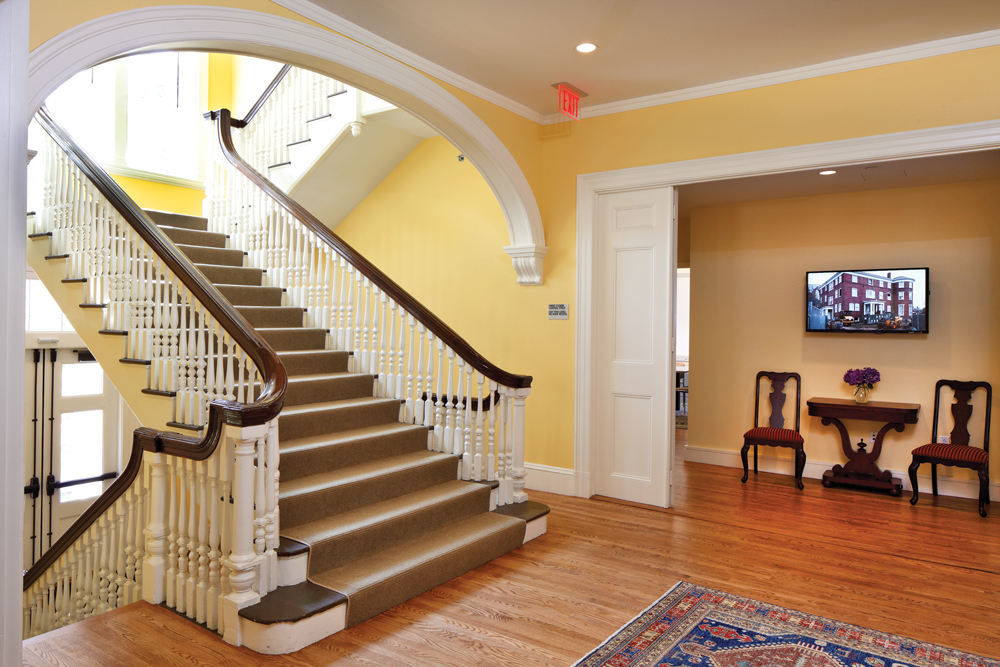
Fay House, the 1807 Federalist structure that once served as the original home of Radcliffe College, was converted to an administrative building for the Radcliffe Institute for Advanced Study at Harvard. The Building Team for the LEED Gold renovation—the oldest LEED-certified building in the U.S., and second-oldest in the world (after Venice’s Sede Centrale, 1453): Venturi, Scott Brown and Associates (now VSBA), Foley Buhl Roberts & Associates (SE), Cosentini Associates (MEP), Green International Affiliates (CE), Grenald Waldron Associates (lighting designer), Steven Stimson Associates (landscape architect), Harvard Green Building Services (sustainability consultant), and Shawmut Design and Construction (CM). PHOTO: MATT WARGO / COURTESY VSBA, LLC
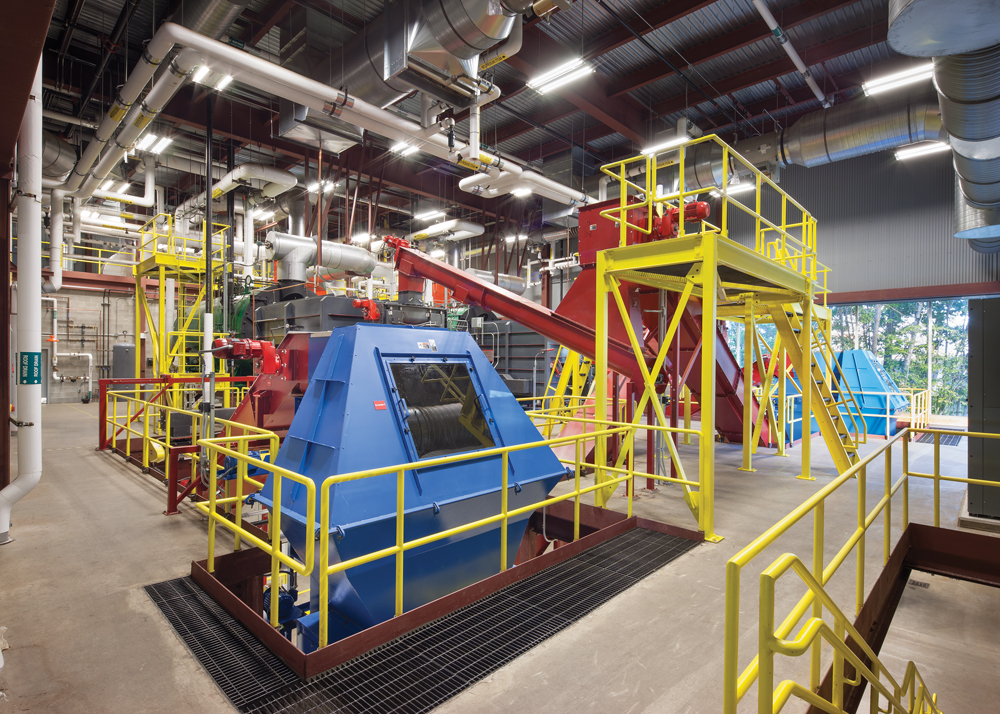
Twin 400-hp biomass-fueled boilers in the $11 million, LEED Gold cogeneration plant at Colby College produce steam for heat, hot water, and cooking and generate up to 10% of electricity used on the Waterville, Maine, campus. PHOTO: © JOHN HORNER, COURTESY ARCHITECTURAL RESOURCES CAMBRIDGE
Community college gets creative to save energy
Haywood Community College, Clyde, N.C., which serves 2,700 full-time and 6,000 part-time students, has gained an international reputation in the creative arts since opening in 2006.
For its new 41,000-sf Creative Arts Building, the college tasked Raleigh-based Innovative Design with reducing energy use by 60%, from 91.6 kBtu/sf/year for a standard building down to 36.0 kBtu/sf/year—and LEED Platinum certification would be nice, too.
This was no mean task, given the programming demands of the facility. The clay studio has eight electric and three gas kilns, all energy hogs. The jewelry program requires enhanced lighting so that students can see their work. The wood studio throws lots of dust into the air, necessitating extensive ventilation.

The wood studio in the LEED Platinum Creative Arts Building at Haywood Community College, Clyde, N.C. The Building Team of Innovative Design (architect), Elm Engineering, B&F Consulting, and Landis Inc. reduced the project’s energy consumption to 17.8 kBtu/sf/year.
The Building Team attacked these problems with a battery of options, starting with optimal building orientation, daylighting, operable windows, stack ventilation shafts, rainwater harvesting, and a high-mass building envelope.
On top of these, the team specified more advanced technologies—152 solar thermal collectors that feed a radiant floor heating system and a 50-ton absorption chiller; seven solar collectors that supply most of the building’s hot water needs; and 468 rooftop PV modules capable of generating 112 kW of power.
The PVs are owned and operated by solar developer FLS Energy, Asheville, which financed the system and sells the power to Duke Energy–Progress. The college will have the option of buying back the PV system in six or seven years.
Since its opening last March, the building’s actual energy consumption has been tracking at 17.8 kBtu/sf/year, well below the anticipated 36.0 kBtu/sf/year.
But the facility’s true success may lie in its positive impact on Haywood’s students. “I’ve already experienced a change in the quality of our students’ work,” says Terry Gess, Chair of Professional Arts. “I attribute this to the many ways that the building works splendidly, especially the quality of light and the well-designed spaces.”Design-builder McGough Companies and Meyer Scherer & Rockcastle (architect) created a high-performing exterior envelope while saving the original brick and stone detailing, interior wood trim, and slate chalkboards.
Related Stories
Sports and Recreational Facilities | Mar 14, 2024
First-of-its-kind sports and rehabilitation clinic combines training gym and healing spa
Parker Performance Institute in Frisco, Texas, is billed as a first-of-its-kind sports and rehabilitation clinic where students, specialized clinicians, and chiropractic professionals apply neuroscience to physical rehabilitation.
Market Data | Mar 14, 2024
Download BD+C's March 2024 Market Intelligence Report
U.S. construction spending on buildings-related work rose 1.4% in January, but project teams continue to face headwinds related to inflation, interest rates, and supply chain issues, according to Building Design+Construction's March 2024 Market Intelligence Report (free PDF download).
Apartments | Mar 13, 2024
A landscaped canyon runs through this luxury apartment development in Denver
Set to open in April, One River North is a 16-story, 187-unit luxury apartment building with private, open-air terraces located in Denver’s RiNo arts district. Biophilic design plays a central role throughout the building, allowing residents to connect with nature and providing a distinctive living experience.
Sustainability | Mar 13, 2024
Trends to watch shaping the future of ESG
Gensler’s Climate Action & Sustainability Services Leaders Anthony Brower, Juliette Morgan, and Kirsten Ritchie discuss trends shaping the future of environmental, social, and governance (ESG).
Affordable Housing | Mar 12, 2024
An all-electric affordable housing project in Southern California offers 48 apartments plus community spaces
In Santa Monica, Calif., Brunson Terrace is an all-electric, 100% affordable housing project that’s over eight times more energy efficient than similar buildings, according to architect Brooks + Scarpa. Located across the street from Santa Monica College, the net zero building has been certified LEED Platinum.
Museums | Mar 11, 2024
Nebraska’s Joslyn Art Museum to reopen this summer with new Snøhetta-designed pavilion
In Omaha, Neb., the Joslyn Art Museum, which displays art from ancient times to the present, has announced it will reopen on September 10, following the completion of its new 42,000-sf Rhonda & Howard Hawks Pavilion. Designed in collaboration with Snøhetta and Alley Poyner Macchietto Architecture, the Hawks Pavilion is part of a museum overhaul that will expand the gallery space by more than 40%.
Affordable Housing | Mar 11, 2024
Los Angeles’s streamlined approval policies leading to boom in affordable housing plans
Since December 2022, Los Angeles’s planning department has received plans for more than 13,770 affordable units. The number of units put in the approval pipeline in roughly one year is just below the total number of affordable units approved in Los Angeles in 2020, 2021, and 2022 combined.
BIM and Information Technology | Mar 11, 2024
BIM at LOD400: Why Level of Development 400 matters for design and virtual construction
As construction projects grow more complex, producing a building information model at Level of Development 400 (LOD400) can accelerate schedules, increase savings, and reduce risk, writes Stephen E. Blumenbaum, PE, SE, Walter P Moore's Director of Construction Engineering.
AEC Tech | Mar 9, 2024
9 steps for implementing digital transformation in your AEC business
Regardless of a businesses size and type, digital solutions like workflow automation software, AI-based analytics, and integrations can significantly enhance efficiency, productivity, and competitiveness.
Office Buildings | Mar 8, 2024
Conference room design for the hybrid era
Sam Griesgraber, Senior Interior Designer, BWBR, shares considerations for conference room design in the era of hybrid work.


